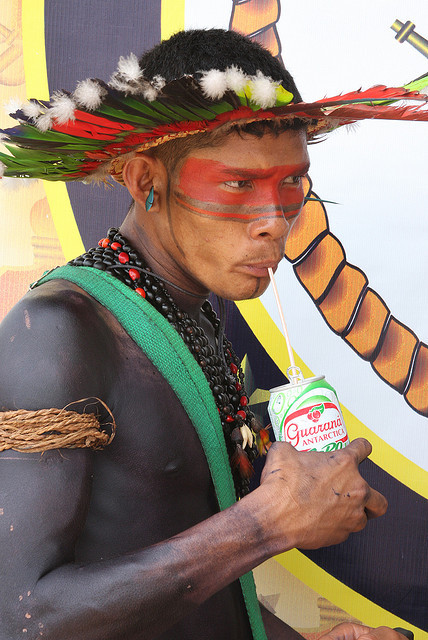10. Assurini women competing in a tug-o-warThe Assurinis (also spelled Akuáwa-Asurini , Assuriní , A
10. Assurini women competing in a tug-o-warThe Assurinis (also spelled Akuáwa-Asurini , Assuriní , Akwaya , Huriní , Suriní or Uriní ) are an indigenous people of Brazil living on the banks of the lower Rio Tocantins River near the town of Tucuruí .Traditionally, Asurinis lived in small independent groups. Each group occupied a large communal house. The shaman was often also the chief of the tribe. All male members of a group belonged to the same paternal lineage.Native to the nation of Brazil, the Assurini are divided into two primary groups, the Assurini do Tocantins and the Assurini do Xingu. These tribal groups are divided by region and differ in culture, language dialect, as well as their history of contact with outsiders. This is focused on the Assurini do Xingu. The word “assurini” means “red people” and Xingu reflects the river they live alongside. This people was first mentioned late in the 1800s, when there were violent squabbles between white settlers in the area and native people who were reportedly Assurini. In the mid 60s, the Assurini were forced out of their traditional residence by another native group known as the Ararawa. Pressure from the hunting of wildcats and rubber extraction pushed these people further upriver. Conflict with settled white neighbors continued, particularly as the Assurini valued quality metal found in white settlements and industrial growth encroached further on their territory. These combined forces led to the Assurini accepting outside influence and inviting contact in the late 1970s.The culture of the Assurini allows for non-traditional marriage structures. An Assurini woman may have two husbands, an elder and younger father, who will hold different roles of responsibility in caretaking for her children and herself. She may also share these husbands with other wives, who work together to support one another in daily activities, with the eldest and youngest of the wives focused on the spiritual well-being of the family unit. The Assurini woman, though marrying young, will likely not bear a child until her mid-20s, spending the early part of her marriage perfecting her skills as a wife and adult member of the tribe.Women of the Assurini, particularly those who do not bear children, are the keepers of the art of ceramics that the tribe is well known for. The tribe highly values painted art, and it is also expressed in their high quality ceramic art, which they create for practical, spiritual, and artistic purposes. The process results in a very thin walled ceramic pot; the pots are formed in a fashion similar to coil pots after which they are set near a hot fire to set before undergoing oxidization in fires containing particular barks. The final decoration involves a first layer that creates the reddish-brown hue, before they are painted in hues of red, yellow, and black. Once the design is complete, they are coated with a layer of tree resin that provides a high sheen that also fixes the dye and preserves the piece longer.The designs are highly stylized and representative of the artist who made them. Each pot’s maker is discernible by the style of painting revealed on it. The patterns are geometric and represent the natural environment the Assurini as well as symbolism from their spiritual beliefs. These same patterns can be seen in work they do on gourds and in body paint they are fond of. In addition to pottery, they are also talented weavers, basket-makers, and flute-makers. Ceramics and weaving are restricted to being women’s work, and the decline of the tribe has reduced the number of ceramic artists to a mere handful. -- source link
Tumblr Blog : sartorialadventure.tumblr.com
#fashion#assurini#native american#brazil#brazilian fashion









